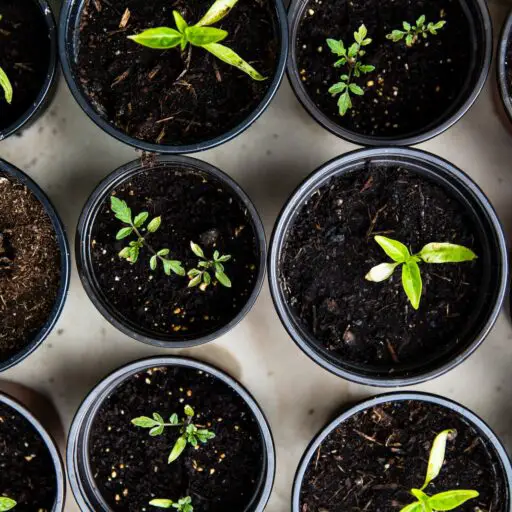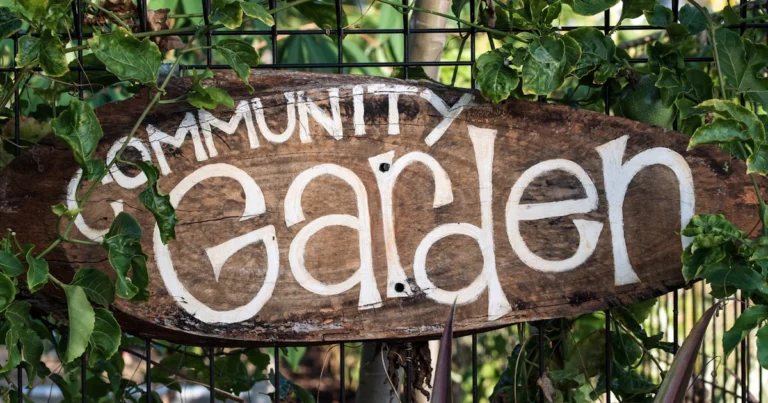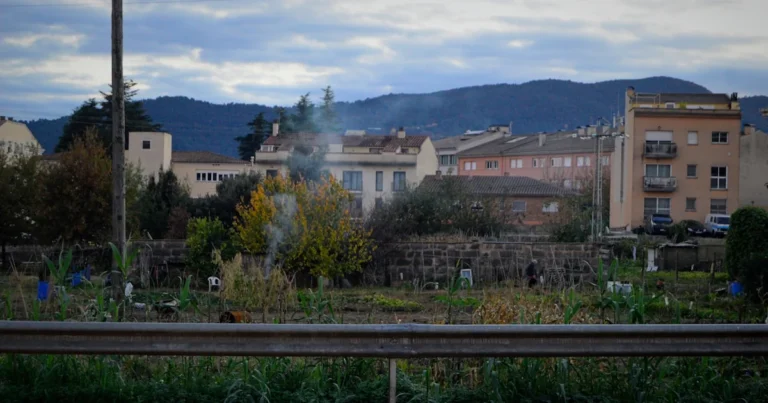Support our educational content for free when you purchase through links on our site. Learn more
Imagine a patch of land in your neighborhood where strangers become friends, stories are shared over freshly picked tomatoes, and generations connect over the rhythm of planting and harvesting. Community gardens are not just about growing plants—they’re about growing people. Did you know that participants in community gardens consume nearly 40% more fruits and vegetables and report significantly lower feelings of loneliness? Intrigued? Keep reading to discover 9 powerful ways community gardens cultivate social bonds, from casual chats by the compost bin to vibrant cultural exchanges that turn a simple garden into a thriving social hub.
Whether you’re a seasoned gardener or a curious newcomer, this article will reveal how these green spaces transform neighborhoods, foster mental and physical well-being, and create a sense of belonging that no urban park or café can match. Plus, we share expert tips and inspiring real-life stories to help you get involved or start your own community garden adventure!
Key Takeaways
- Community gardens create shared purpose and collaboration that naturally bring people together.
- Regular proximity and casual encounters foster friendships and trust.
- Gardens serve as hubs for skill-sharing, mentorship, and cultural exchange.
- Social interaction in gardens improves mental health and reduces isolation.
- Intergenerational connections and inclusive design make gardens welcoming for all ages and backgrounds.
- Organized events and thoughtful garden design amplify social vibrancy.
Ready to dig in and grow your community? Let’s get started!
Table of Contents
- ⚡️ Quick Tips and Facts
- 🌱 The Roots of Connection: A Brief History of Community Gardening
- How Do Community Gardens Cultivate Social Interaction? Our Top 9 Ways!
- 1. Shared Purpose & Collaborative Cultivation: Growing Together
- 2. The Power of Proximity: Regular Encounters & Casual Chats
- 3. Skill-Sharing & Learning Hubs: From Novice to Green Thumb Guru
- 4. Overcoming Challenges Together: Problem-Solving & Mutual Support
- 5. Celebrating Harvests & Milestones: Community Events & Festivities
- 6. The Joy of Sharing: Food, Stories, and Laughter
- 7. Building a Sense of Belonging: Identity & Ownership
- 8. Intergenerational Mentorship: Bridging Age Gaps
- 9. Cultural Exchange Through Cuisine & Cultivation: A Global Garden
- 💖 Beyond the Soil: The Profound Benefits of Social Connection in Gardens
- 👵👴👧👦 Cultivating Connections Across Generations: Seniors, Youth, and Everyone In Between
- 🚧 Weeding Out Isolation: Common Challenges & Our Expert Solutions
- 🛠️ Our Top Tips for Cultivating a Socially Vibrant Community Garden
- 📖 Our Garden Stories: Real-Life Tales of Connection & Community
- ✅ Conclusion: Sowing Seeds of Connection
- 🔗 Recommended Links: Dig Deeper!
- ❓ FAQ: Your Burning Community Garden Questions Answered
- 📚 Reference Links: Our Trusted Sources
Hello, fellow green thumbs and community champions! It’s your favorite team of dirt-diggers from Community Gardening™ here. We’ve spent countless hours with our hands in the soil, not just growing veggies, but growing friendships, too. And let us tell you, the most beautiful thing that blossoms in a community garden isn’t the prize-winning pumpkin or the juiciest tomato—it’s the connection between people.
So, you’re wondering how these little patches of green tucked into our urban landscapes can be such powerful hubs of social activity? Grab your trowel and a cup of tea, because we’re about to dig into the wonderful, loamy layers of how community gardens cultivate human connection.
⚡️ Quick Tips and Facts
In a hurry? Here’s the soil-scoop on how community gardens get people mingling:
- Shared Spaces, Shared Stories: Gardens are natural gathering spots. Working side-by-side provides endless opportunities for casual chats and deeper conversations.
- Common Ground (Literally!): A shared goal—like wrestling a stubborn squash vine into submission—is a powerful unifier. Teamwork makes the dream work, and it builds friendships along the way.
- Knowledge is for Sharing: Newbie gardeners learn from seasoned experts, and in return, veterans get a fresh perspective. It’s a beautiful cycle of mentorship and learning.
- Party in the Patch!: From potlucks to harvest festivals, gardens are the perfect venue for community events that turn neighbors into friends.
- Healthier Together: Studies show that community gardeners don’t just connect more; they’re healthier, too! One study found they eat 37.5% more fruits and vegetables than non-gardeners.
- Reduces Loneliness: In our increasingly digital world, gardens offer a vital, face-to-face antidote to social isolation. Research shows that engagement in these green spaces can significantly improve mental well-being.
- Economic Blooms: Every $1 invested in a community garden can yield about $6 worth of produce. Sharing this bounty often leads to sharing recipes and meals, further strengthening social ties.
🌱 The Roots of Connection: A Brief History of Community Gardening
Believe it or not, community gardening isn’t a newfangled trend. It’s a tradition with deep historical roots, often sprouting during times of social and economic need. The first community gardens in the U.S. popped up in the 1890s during an economic recession to help families struggling with unemployment and hunger.
Think of the famous “Victory Gardens” during World War I and II. These weren’t just about food production (though they impressively produced up to 40% of the nation’s fresh vegetables!); they were about social cohesion. They gave citizens a shared purpose, a way to contribute to the war effort, and a reason to come together. From the beginning, these gardens were as much about cultivating community as they were about cultivating crops.
How Do Community Gardens Cultivate Social Interaction? Our Top 9 Ways!
So, what’s the secret sauce? Or, in our case, the secret compost? How do these plots of land work their social magic? Here are the top ways we’ve seen it happen firsthand.
1. Shared Purpose & Collaborative Cultivation: Growing Together
When you join a community garden, you’re instantly part of a team. Everyone is working towards the same delicious goals: ripe tomatoes, crisp lettuce, and vibrant flowers. This shared mission breaks down barriers. You’re no longer just strangers living in the same area; you’re fellow farmers battling aphids and celebrating the first sprout of spring. This collaborative spirit is the very foundation of the garden’s social ecosystem.
2. The Power of Proximity: Regular Encounters & Casual Chats
You can’t avoid bumping into your fellow gardeners when you’re all tending to plots just a few feet apart. These regular, informal encounters are where the magic happens. A simple question about what fertilizer to use can blossom into a conversation about family, hobbies, and life. It’s the “water cooler” effect, but with more sunshine and way better snacks. 🍉
3. Skill-Sharing & Learning Hubs: From Novice to Green Thumb Guru
Every community garden is a living library of horticultural knowledge. We’ve seen seasoned gardeners, who can identify a plant disease from 20 paces, mentor complete beginners who aren’t sure which end of the seed goes down. This exchange is a powerful social glue. It fosters respect and creates a dynamic where everyone has something to teach and something to learn.
4. Overcoming Challenges Together: Problem-Solving & Mutual Support
Nothing bonds a group like a common enemy! Whether it’s a sudden squash bug invasion, a broken water pump, or a freak hailstorm, challenges are inevitable. Tackling these problems as a group forges strong relationships built on trust and mutual support. We once had a massive water pipe burst, and the way everyone grabbed buckets and worked together to save the plants was a testament to the community’s strength.
5. Celebrating Harvests & Milestones: Community Events & Festivities
All that hard work deserves a celebration! Harvest festivals, potlucks, seed swaps, and “biggest zucchini” contests are staples of community garden life. These events transform the garden from a place of work into a hub of social festivity, creating lasting memories and inside jokes.
6. The Joy of Sharing: Food, Stories, and Laughter
There’s an unspoken rule in community gardens: you’ll always have too much of something. Whether it’s zucchini, kale, or cherry tomatoes, gardeners love to share their bounty. This act of giving and receiving is a fundamental social interaction that builds goodwill and connection. Sharing produce often leads to sharing recipes, which leads to sharing meals and stories.
7. Building a Sense of Belonging: Identity & Ownership
A community garden quickly becomes a “third place”—a social hub outside of home and work. As the featured video in this article notes, this shared space helps “create a sense of belonging.” [cite: #featured-video] Participants develop a sense of ownership and pride, which strengthens their connection to the neighborhood and to each other. It’s our garden, and that collective identity is a powerful social force.
8. Intergenerational Mentorship: Bridging Age Gaps
Gardens are one of the few places where people of all ages can connect on equal footing. We see retirees sharing decades of wisdom with young families, and kids teaching tech-savvy tricks for identifying plants with apps like PictureThis. This exchange dismantles age-related stereotypes and builds mutual respect. As one study points out, these interactions are key to improving positive self-perceptions, especially for older adults.
9. Cultural Exchange Through Cuisine & Cultivation: A Global Garden
A community garden is a melting pot of cultures. You’ll find someone growing bitter melon for a traditional Filipino dish next to a plot of cilantro and tomatillos for Mexican salsa. This diversity in edible plants sparks curiosity and conversation, leading to a rich exchange of cultural traditions, gardening techniques, and, best of all, delicious food!
💖 Beyond the Soil: The Profound Benefits of Social Connection in Gardens
The friendships formed over rows of carrots are more than just feel-good bonuses; they have profound, scientifically-backed benefits for both individuals and the wider community.
Mental & Emotional Well-being: A Natural Antidote to Loneliness
The social aspect of gardening is a powerful balm for the mind and soul. It provides a sense of purpose and reduces stress, anxiety, and feelings of isolation. A study on the social sustainability of community gardens found that perceived trust within the community had the strongest positive influence on the garden’s success and its members’ well-being. When you feel connected and supported, your mental health thrives.
Physical Health & Active Lifestyles: Digging for Wellness
Gardening is fantastic physical exercise. But when you’re doing it alongside friends, it doesn’t feel like a workout. The social motivation keeps you coming back, and before you know it, you’ve spent hours digging, weeding, and watering. This combination of physical activity and social engagement is a winning recipe for a healthier, happier life.
Strengthening Community Resilience: A United Front
The social networks built in a garden, often called “social capital,” make the entire community stronger. When neighbors know and trust each other, they’re more likely to look out for one another, solve local problems, and work together in times of crisis. As the YouTube video mentions, “Collaboration in gardening builds trust and cooperation, leading to greater community involvement.” [cite: #featured-video]
Fostering Civic Engagement & Local Stewardship: Growing Good Citizens
Community gardens can be a gateway to broader civic participation. Gardeners learn about democratic governance, resource management, and collective decision-making. This experience can empower them to get involved in other local issues, transforming them into active, engaged citizens who care deeply about their neighborhood’s future.
👵👴👧👦 Cultivating Connections Across Generations: Seniors, Youth, and Everyone In Between
One of the most beautiful things we witness is the way gardens bridge generational divides. They are natural spaces for intergenerational programs that yield incredible benefits for everyone involved.
At Belmont Village Senior Living, for example, residents actively participate in gardening programs, growing fresh ingredients that are then used in their meals. [cite: Belmont Village Senior Living] This isn’t just about gardening; it’s about creating purposeful, engaging activities that foster social bonds. Patricia Will, the Founder and CEO, notes, “By combining the benefits of social connection from an engaging activity like gardening and the utilization of fresh fruits, vegetables, herbs and spices in daily meals, we can further support wellness in aging for our residents.”
These programs combat loneliness, provide a sense of purpose, and allow for the priceless transfer of knowledge and life experience from older adults to younger generations.
Gardens as Inclusive Spaces: Welcoming Diverse Communities
For a garden to be a true social hub, it must be inclusive. This means:
- ✅ Accessible Design: Raised beds for gardeners with mobility issues.
- ✅ Multilingual Signage: Welcoming signs and rules in multiple languages.
- ✅ Cultural Sensitivity: Respecting and celebrating the diverse crops and traditions of all members.
- ❌ Avoiding Cliques: Ensuring new members are welcomed and integrated into the community.
🚧 Weeding Out Isolation: Common Challenges & Our Expert Solutions
Let’s be real—it’s not always a utopian paradise of sunshine and roses. Like any community, gardens can face social challenges. But don’t worry, we’ve got the solutions!
| Common Challenge 😟 | Our Expert Solution 🌱 |
|---|---|
| Communication Breakdowns | Establish clear communication channels: a physical bulletin board, an email newsletter, or a group chat. Regular meetings are key! |
| Conflict Over Resources/Plots | Develop clear, written Community Garden Policies from the start. A transparent system for plot allocation and rules for shared tools prevents most disputes. |
| Volunteer Burnout | Don’t rely on just a few people. Create a committee structure and rotate roles. Make work parties fun social events with music and food! |
| Cliques & Exclusion | Create a “buddy system” to pair new members with veterans. Host regular social events designed to help everyone mingle and get to know each other. |
| Diverse Interests | Interestingly, one study found that too much heterogeneity of interests could negatively impact social cooperation. The solution? Find common ground! Focus on the shared goals of the garden while creating sub-groups or events for specific interests (e.g., a workshop on canning, a group focused on native plants). |
🛠️ Our Top Tips for Cultivating a Socially Vibrant Community Garden
Want to turn your community garden into a thriving social hotspot? Here’s our tried-and-true advice.
Designing for Interaction: Layout & Shared Spaces
The physical design of your garden matters immensely. Think beyond the plots! Your garden design ideas should intentionally create “social infrastructure.”
- A Central Hub: Include a gathering space with benches, a picnic table, or a shaded pergola. This encourages people to linger and chat.
- Wide Pathways: Make paths wide enough for two people to walk and talk comfortably.
- Communal Resources: Place tool sheds, compost bins, and water sources in central locations to maximize opportunities for interaction.
- Visible Signage: A community bulletin board is essential for sharing news, events, and tips.
Organizing Engaging Activities: Beyond Just Planting
A garden’s social life thrives on a calendar of engaging events.
- Workshops: Host classes on topics like composting, seed saving, or pest management. Invite local experts!
- Social Gatherings: Organize regular potlucks, BBQs, or simple “coffee in the garden” mornings.
- Kid-Friendly Activities: Create a small, designated children’s garden or host scavenger hunts to make the space welcoming for families.
- Community Outreach: Host a public plant sale or a harvest festival to invite the wider neighborhood into your space.
Effective Communication Strategies: Keeping Everyone in the Loop
Good communication is the fertilizer for a healthy community.
- Hybrid Approach: Use both digital (email, social media) and non-digital (bulletin board) methods to reach everyone.
- Regular Meetings: Hold seasonal meetings to plan, discuss issues, and make decisions collectively.
- Clear Leadership: Have a designated coordinator or committee that members know they can go to with questions or concerns.
📖 Our Garden Stories: Real-Life Tales of Connection & Community
At our main Community Gardening™ plot, we’ve seen it all. There’s Sarah, a young graphic designer who moved to the city knowing no one. She joined the garden hoping for fresh basil and ended up meeting her now-husband, Mark, while they both tried to figure out how to build a better tomato cage. Their wedding even featured flowers grown in the garden by their friends.
Then there’s Mr. Henderson, a retired mechanic in his late 70s. He was feeling isolated after his wife passed away. He took over a small plot and soon became the garden’s “tool master,” fixing everyone’s broken shovels and sharing stories from his life. The garden gave him a renewed sense of purpose and a whole new family who checks in on him.
These aren’t isolated incidents. They are the everyday magic of community gardening, proving that what we’re really growing… is each other.
✅ Conclusion: Sowing Seeds of Connection
Well, friends, after digging deep into the fertile ground of community gardens, it’s clear that these green spaces are much more than just places to grow plants. They are vibrant social ecosystems where friendships sprout, trust takes root, and communities flourish. From shared goals and casual chats to intergenerational mentorship and cultural exchange, community gardens are living proof that growing together is thriving together.
We’ve seen how proximity, collaboration, and celebration create a natural social glue that binds neighbors into a supportive network. Plus, the benefits go beyond socializing—they boost mental and physical health, foster civic engagement, and build resilient neighborhoods. As the Belmont Village Senior Living example shows, gardening programs can even enhance wellness for aging adults by combining social interaction with purposeful activity.
If you’ve ever wondered how a patch of dirt can transform a neighborhood, now you know: it’s the people who cultivate it together. So, whether you’re a seasoned gardener or a curious newcomer, we wholeheartedly recommend diving into your local community garden. You’ll harvest more than just veggies—you’ll harvest friendships, stories, and a sense of belonging that no store-bought produce can match.
Ready to get your hands dirty and your heart full? Let’s grow together!
🔗 Recommended Links: Dig Deeper!
Looking to equip your garden and yourself for the social adventure ahead? Here are some top picks and resources we love:
-
PictureThis Plant Identifier App:
Amazon (Android) | Google Play | PictureThis Official Website -
Gardening Tools & Supplies:
- Fiskars Garden Tool Set:
Amazon | Walmart | Fiskars Official Website - Burpee Seed Collections:
Amazon | Burpee Official Website
- Fiskars Garden Tool Set:
-
Books on Community Gardening & Social Connection:
❓ FAQ: Your Burning Community Garden Questions Answered
What are the social benefits of participating in community gardens?
Community gardens foster social interaction, trust, and cooperation among participants. They provide a shared space where people can meet regularly, collaborate on common goals, and build friendships. This social capital improves mental well-being, reduces feelings of isolation, and creates a sense of belonging. Studies (such as the one published by MDPI) confirm that trust within the garden community is a key driver of social sustainability.
How do community gardens help build stronger neighborhoods?
By creating a shared space for interaction and collaboration, community gardens strengthen neighborhood ties. They encourage residents to work together, share resources, and support each other, which leads to increased neighborhood safety, civic engagement, and resilience. The garden becomes a “third place” where social bonds extend beyond the garden itself, fostering a united community.
In what ways do community gardens encourage collaboration among residents?
Community gardens require joint decision-making, shared responsibilities, and collective problem-solving. Whether it’s managing plots, organizing events, or tackling pests, gardeners collaborate regularly. This teamwork builds communication skills and mutual respect, turning diverse individuals into a cohesive group.
Can community gardening improve mental health through social interaction?
Absolutely! Gardening itself reduces stress and promotes mindfulness, but the social interaction in community gardens amplifies these benefits. Engaging with others combats loneliness, fosters emotional support, and enhances self-esteem. Belmont Village Senior Living’s gardening programs highlight how social gardening activities improve positive self-perceptions among aging adults.
How do community gardens facilitate connections between different age groups?
Gardens are natural intergenerational spaces where seniors, adults, and children work side-by-side. Older gardeners share knowledge and life experience, while younger participants bring energy and new ideas. This exchange breaks down age-related stereotypes and builds respect across generations.
What role do community gardens play in fostering cultural exchange?
Community gardens often reflect the cultural diversity of their neighborhoods. Gardeners grow traditional crops from their heritage, share recipes, and celebrate cultural festivals. This creates a rich environment for learning about different customs and building cross-cultural friendships.
How does working in a community garden enhance communication skills?
Regular collaboration on garden tasks and events requires clear communication, active listening, and conflict resolution. Gardeners learn to express ideas, negotiate responsibilities, and share feedback constructively. These skills often translate into stronger relationships both inside and outside the garden.
How can community gardens be made more inclusive and welcoming?
Inclusive gardens feature accessible design (e.g., raised beds), multilingual signage, and cultural sensitivity. They actively welcome newcomers through buddy systems and social events, and ensure that all voices are heard in decision-making. Avoiding cliques and fostering a welcoming atmosphere is key to social sustainability.
📚 Reference Links: Our Trusted Sources
-
Belmont Village Senior Living Gardening Programs:
https://www.belmontvillage.com/news_events/community-gardens-promote-physical-and-mental-activity-as-well-as-social-interaction-for-aging-adults/ -
MDPI Study on Social Sustainability of Community Gardens:
https://www.mdpi.com/2071-1050/10/4/1085 -
New York State Community Gardens Task Force Report 2023:
https://agriculture.ny.gov/community-gardens-task-force-2023-report -
Community Gardening™ Benefits of Community Gardens:
https://www.community-gardening.org/category/benefits-of-community-gardens/ -
Community Gardening™ Community Garden Events:
https://www.community-gardening.org/category/community-garden-events/ -
Community Gardening™ Community Garden Policies:
https://www.community-gardening.org/category/community-garden-policies/ -
Community Gardening™ Garden Design Ideas:
https://www.community-gardening.org/category/garden-design-ideas/ -
Community Gardening™ Edible Plants:
https://www.community-gardening.org/category/edible-plants/ -
PictureThis Plant Identifier Official Website:
https://www.picturethisai.com/ -
Fiskars Gardening Tools Official Website:
https://www.fiskars.com/gardening -
Burpee Seeds Official Website:
https://www.burpee.com/
We hope this deep dive has inspired you to get involved in your local community garden or to start one if there isn’t one nearby. Remember, the best harvest is the friendships you grow along the way! 🌻🌿






